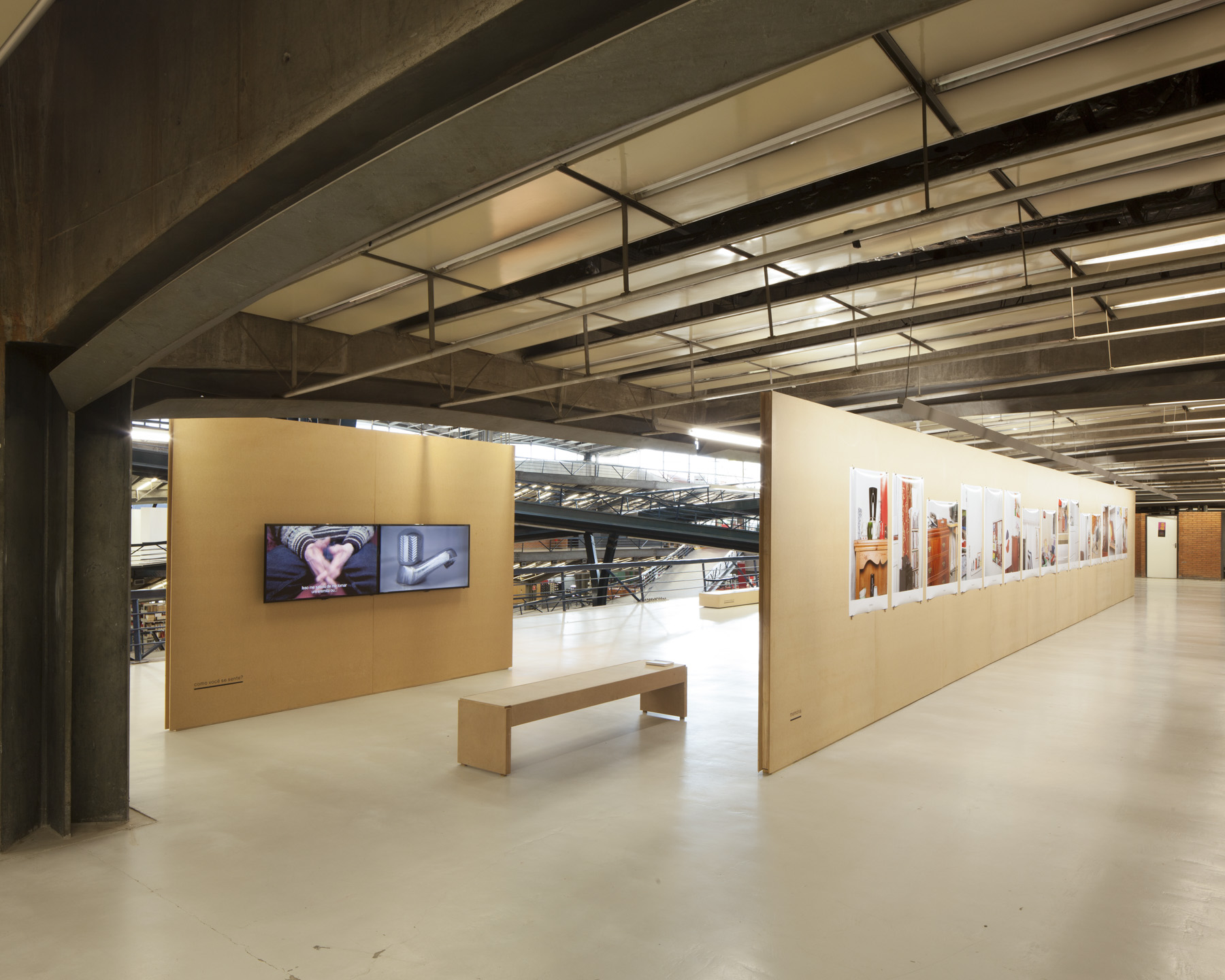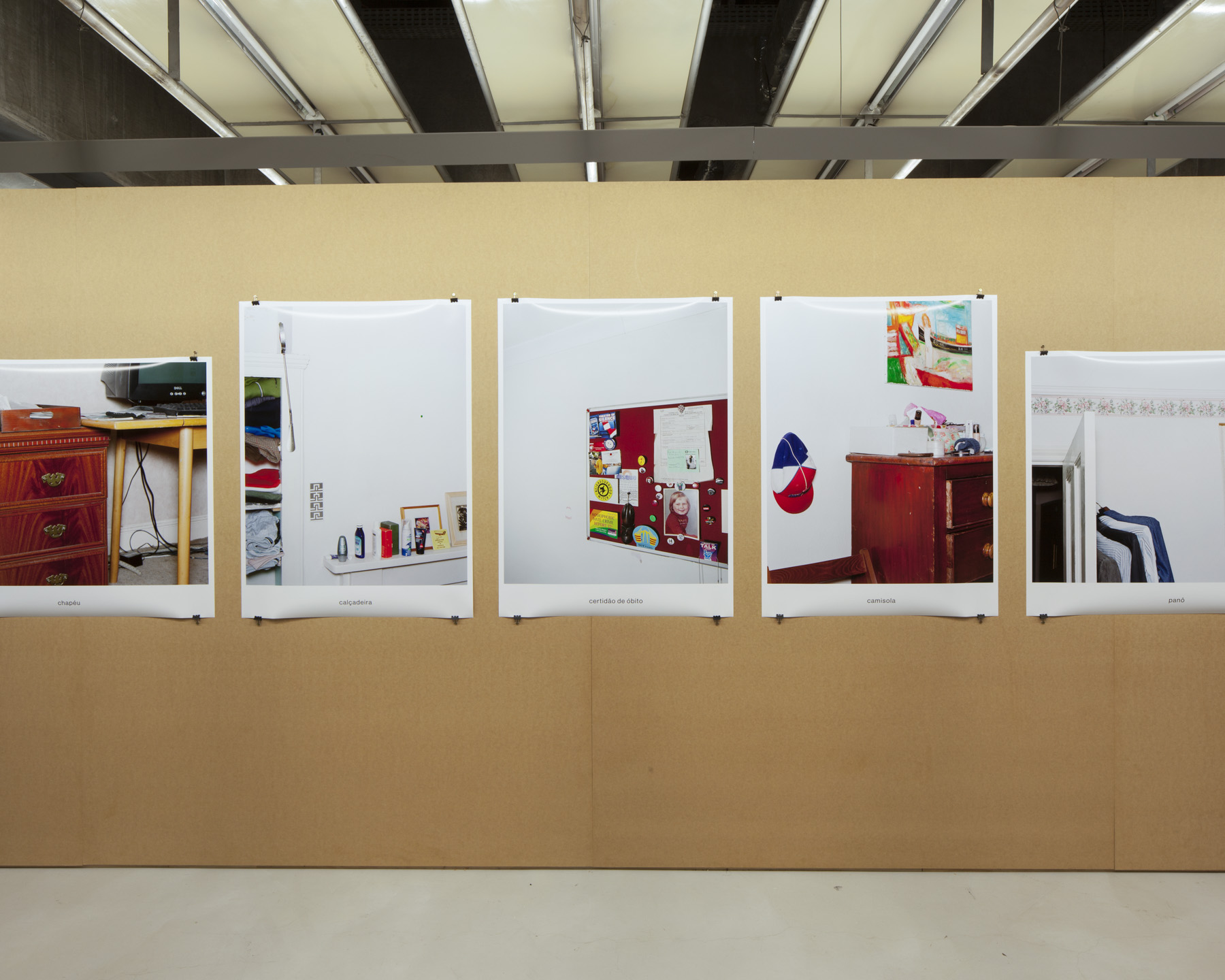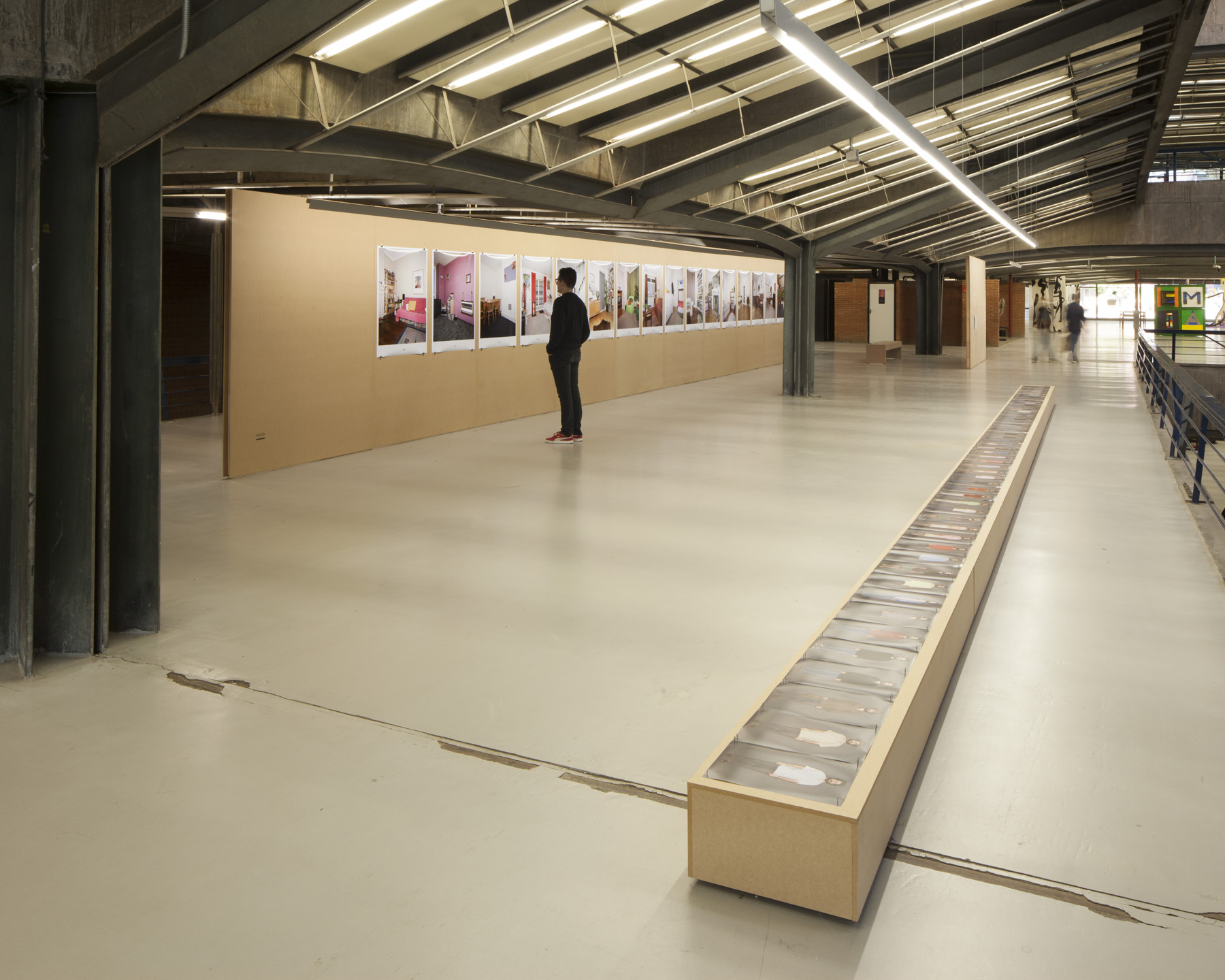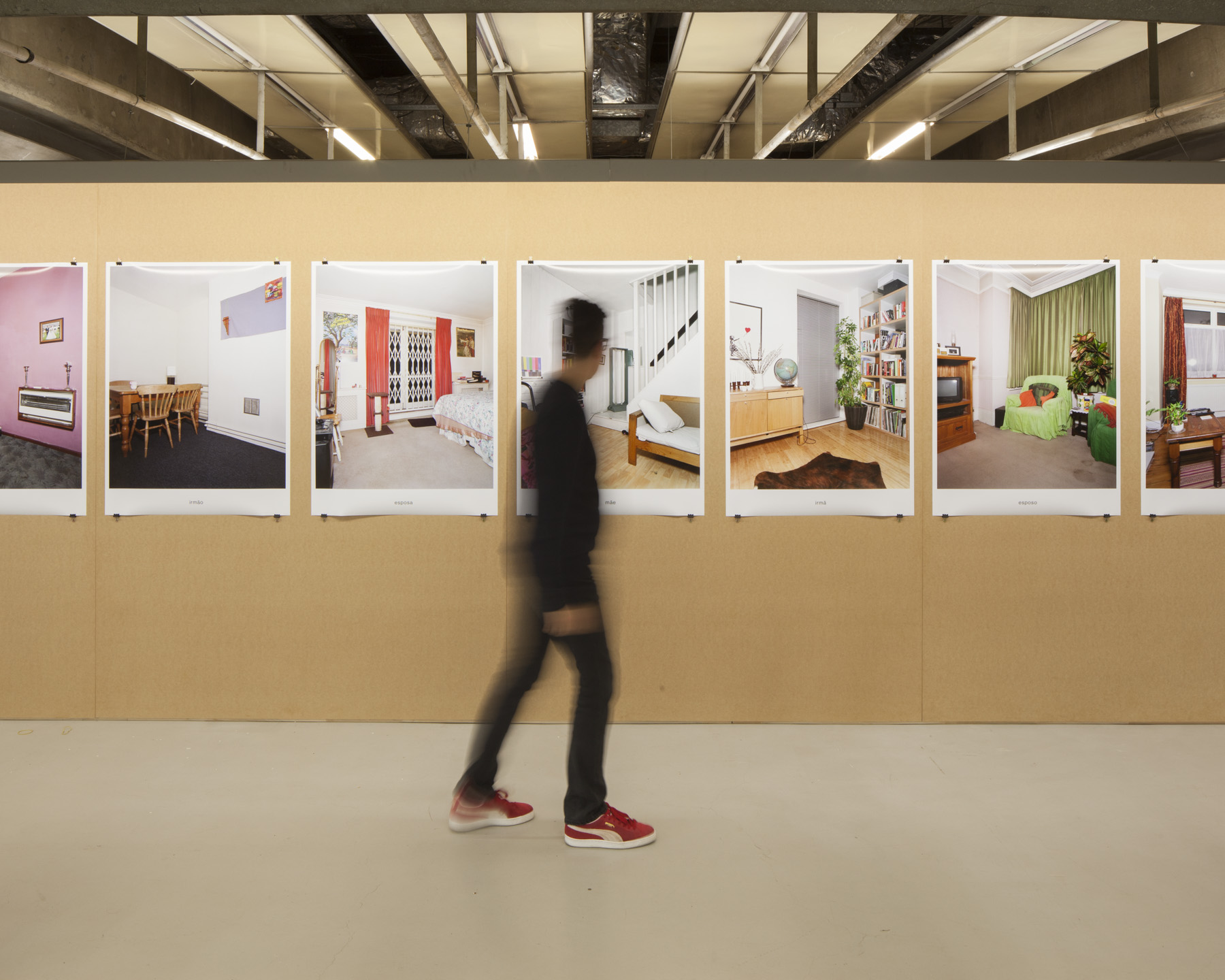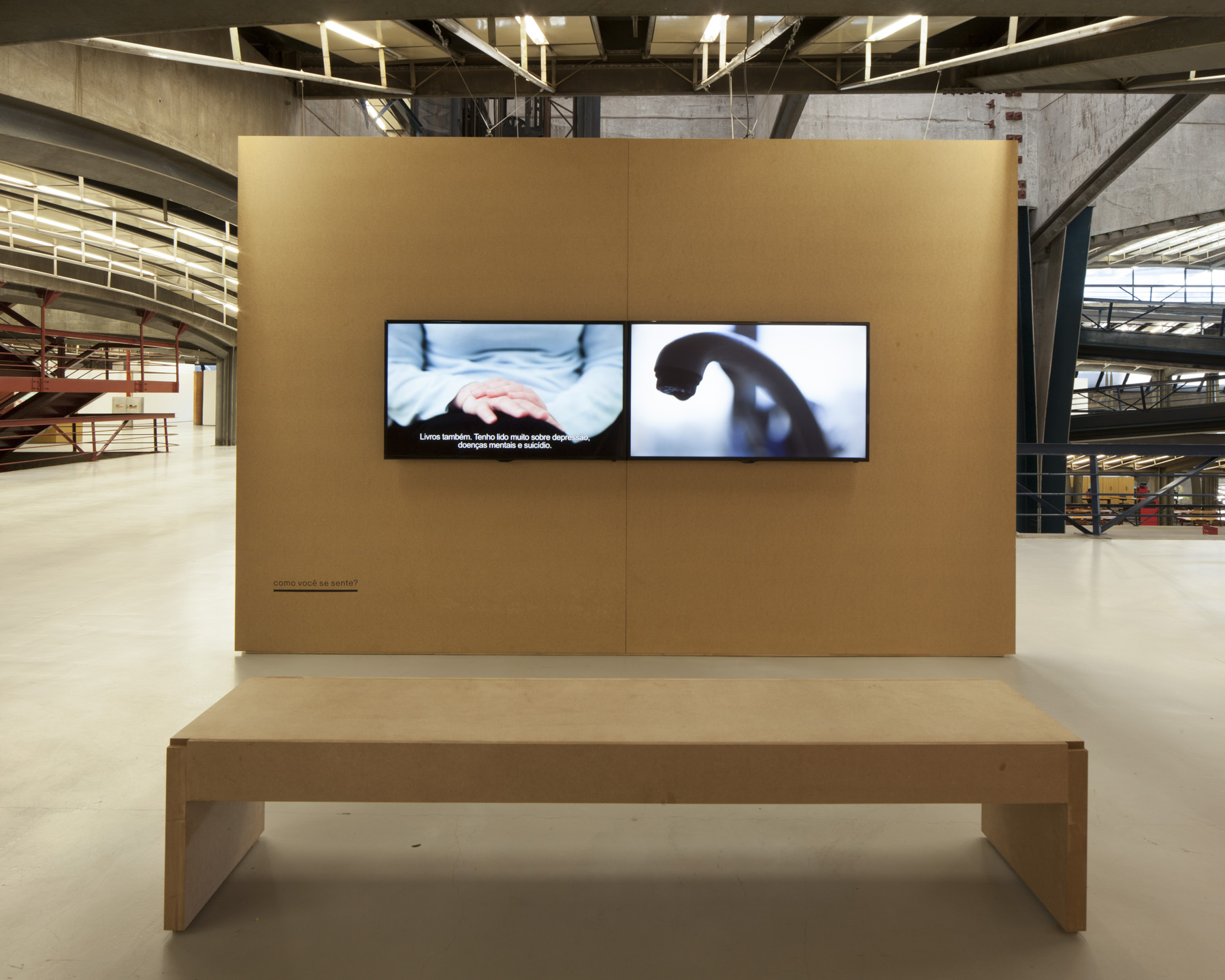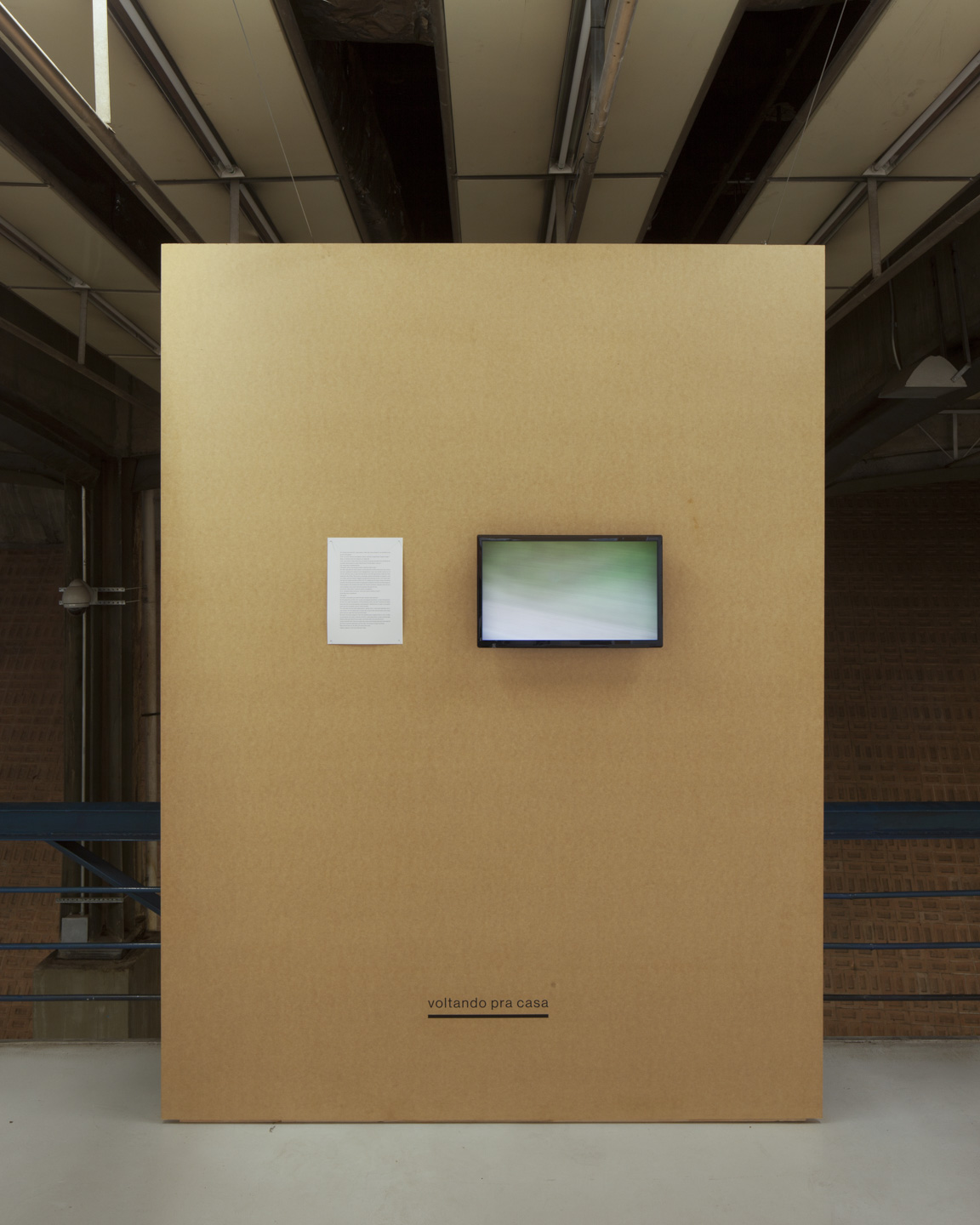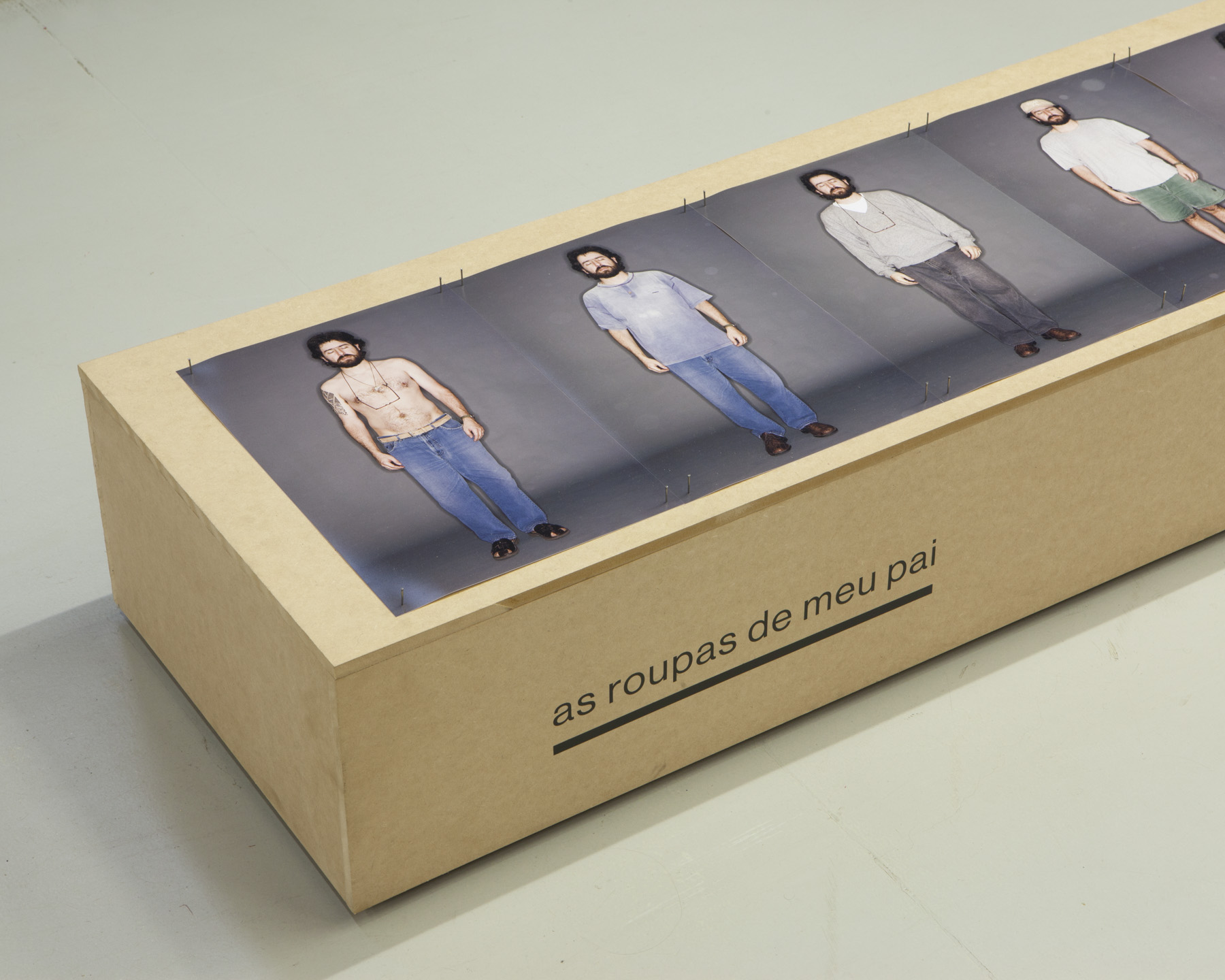Não estou sozinho / I am not alone
Não estou sozinho
Exposição ocorrida no Centro Cultural São Paulo, em São Paulo, em junho de 2016.
Curadoria: Galciane Neves
Projeto expográfico: Marcus Vinicius Santos
Identidade visual: Luciana Facchini
a imagem que não seria imagem, mas o gesto diante da ausência
observação 1: Presentificar o comportamento, as atitudes, reações – ethos. É da natureza de um personagem não conseguir comunicar integralmente tudo o que quer, o que não significa que ele apelaria para um falso que ele mesmo coordena e monta para usufruto do outro. Apresenta-se travestido, aos fragmentos, como uma figura em potencial, que poderia ser extraviada ou mesmo abandonada em algum ponto da história que estava sendo registrada.
observação 2: “Como você se sente?”. Pergunta-abismo. A fala não exibe, em rigor, uma matéria verdadeira, porém a impressão, a marca, o eidos causa nos outros corpos (em quem esteve ali, ouvindo e registrando, e em quem assiste, de longe) uma ausência atravessante. As mãos se engajam na resposta. São todas elas testemunhas destes vestígios. A tela, local de acesso, e também de corte, é o espaço de articulações de uma série de discursos. Mas, mesmo parecendo apartar seus personagens de um contato cara a cara, é também o espaço de consciência desses intérpretes, quando a palavra e igualmente o silêncio são dotados de muito esforço por partilhar dor. Segue-se desse esforço uma fixação de vertigens.
observação 3: Trata-se de um habitat, indubitavelmente, um lugar comum, uma casa qualquer, um canto qualquer entre móveis e cotidiano. O registro o expõe por meio de uma descarga de fisicalidade muda. Ao visualizar essas abreviações de espaço, não nos é oferecida a possibilidade de vasculhar ou de circular. Trata-se de um visível que ilude, oprime, que faz brecar o acesso, já que invalida um pathos (será possível?). Somos evacuados dessa experiência, posto que tudo é superfície.
observação 4: Ao invés de ruptura, a topografia e o contorno de alguns elementos – objetos afetivos, rastros de quem não está mais ali. O objeto não vale por si, mas por sua combinação com o espaço, com quem ainda lembra de alguém por meio dele, com sua força de disseminar uma longínqua sensação de presença. Entre a história e a memória, os objetos ganham nomes. Saem do local de sua instauração e situam-se no interstício entre o relato (fabular) e a imaginação (percepção de quem não o vê). Nomear é o momento poético do pensamento, disse Agamben: calçadeira, camisola, panô, cd. O nome é o logos, uma possível chave para conexões lógicas de sentido de quem não acessa a coisa. Ali, repousa lembrança, um esquema compositivo para manifestar seu dono ou o seu uso antigo. Agora, cansado, empoeirado de tempo, o objeto desfalece. Não serve mais e, inútil, faz adormecer seus antecedentes.
Galciani Neves
(abril/2016)
I am not alone
Exhibition held at Centro Cultural São Paulo, in São Paulo, in June 2016.
Curator: Galciane Neves
Exhibition design: Marcus Vinicius Santos
Visual identity: Luciana Facchini
the image that would not be an image, but a gesture that faces absence
observation 1: Bring behavior, attitudes, reactions to the present – ethos. It is in the nature of the character to not manage to communicate integrally everything they want, which doesn’t mean they would appeal to a falsehood they plan and set up themselves for another person’s use. It is presented as a travesty, in fragments, like a potential figure that might be lost or even abandoned at some point in the story being registered.
observation 2: “How do you feel?”. An abyss of a question. To be precise, the spoken lines do not exhibit true matter, but the impression left, the mark, the eidos, this causes a pervading absence in others (the one who was there, listening and registering, and those who now watch from a distance). The knotted hands help draft the answers. They are all witnesses to these vestiges. The screen – point of access and of cuts – is the space in which a series of discourses are expressed. But, even though it appears to separate the characters from face-to-face contact, it is also a space for the conscience of these interpreters, when word and silence are equally endowed with an effort for sharing pain. These efforts anchor all the vertigos.
observation 3: This indubitably brings us to a habitat, a common place, a random house, a chance corner between furniture and daily life. Registering this exposes it by means of a discharge of mute physicality. By visualizing these abbreviations of space, we are not offered the possibility to explore or circulate. This is a visibility that illudes, oppresses, and stalls access by invalidating a pathos (is this possible?). We are removed from this experience, since everything is on the surface.
observation 4: Instead of rupture, we have the topography and contour of various elements – objects of affection, traces of one who is no longer there. The object has no worth on its own, but for its combination with the space, with those who remember someone through them, with their power to disseminate a faraway sensation of presence. Between history and memory, objects gain names. They leave their point of establishment and settle in the interval between report (fable) and imagination (the perception of those who can not see). To name is the poetic moment of thought, said Agamben: shoehorn, nightdress, wall hanging, cd. The name is the logos, a possible key for logical connections of meaning for those who cannot access the object. There, memory rests; a composite blueprint that manifests a previous owner or previous use. Now, exhausted, covered in the dust of time, the object collapses. It has no more use, and, useless, it sets its precursors to rest.
Galciani Neves
(April/2016)




